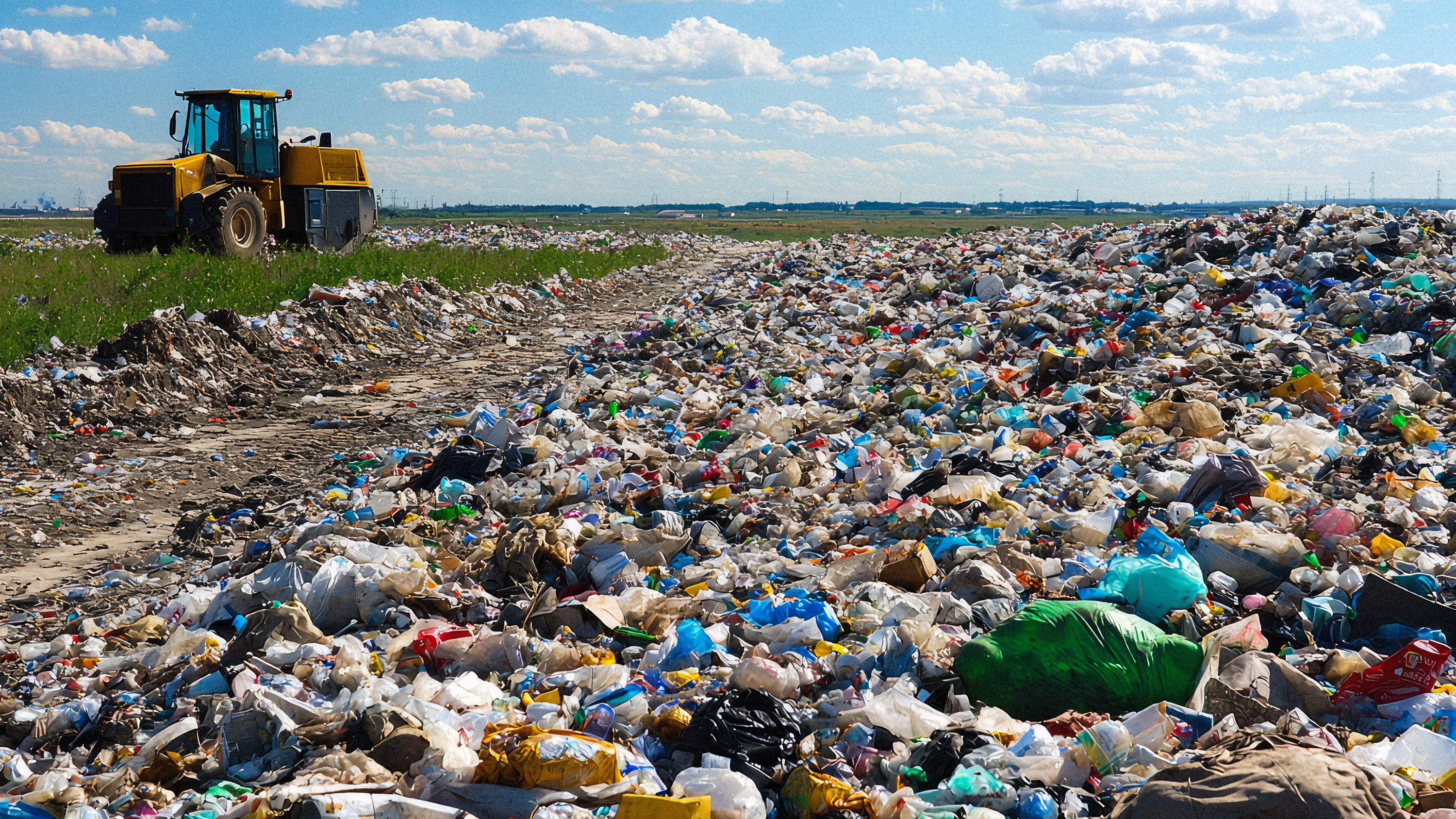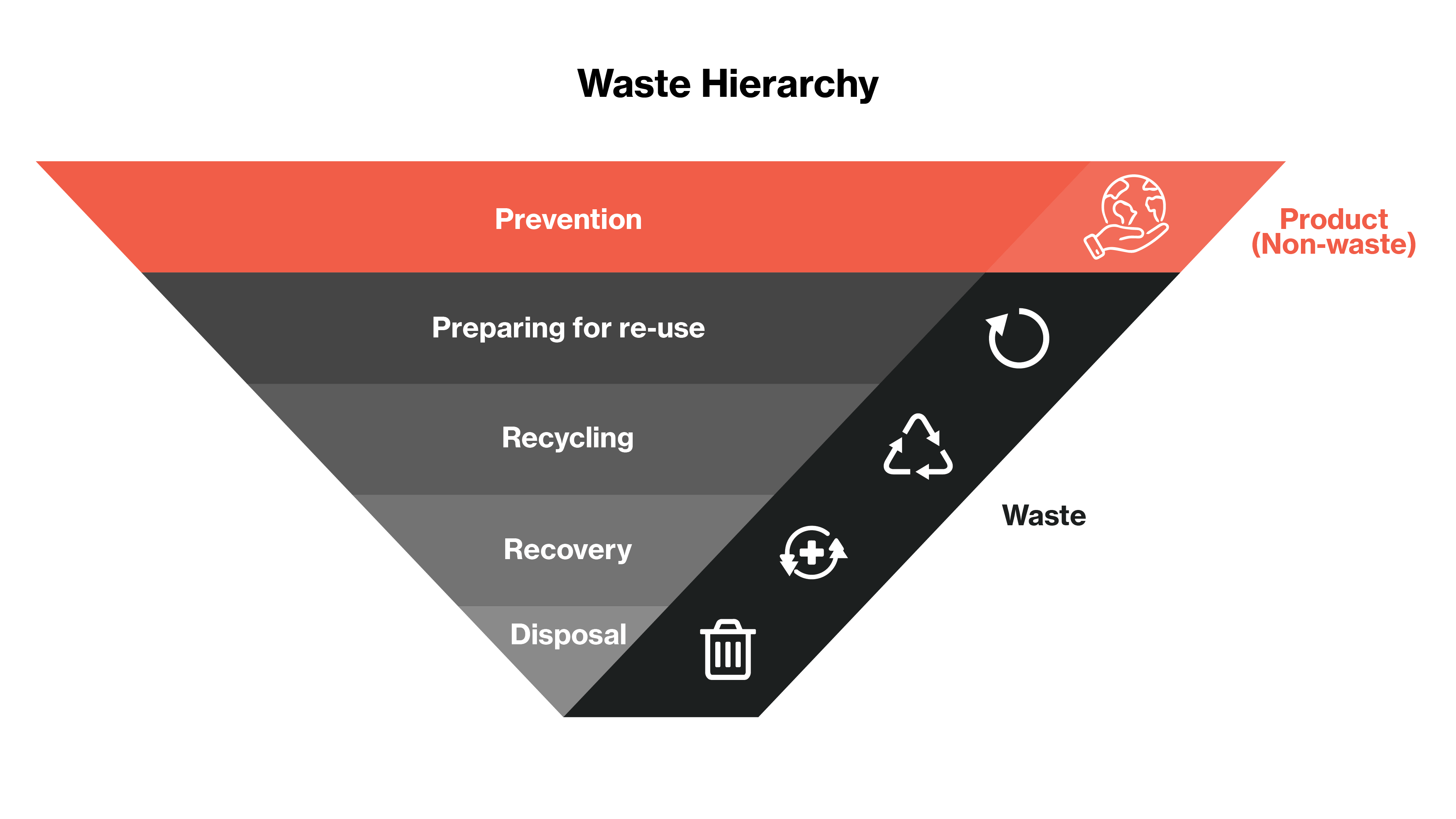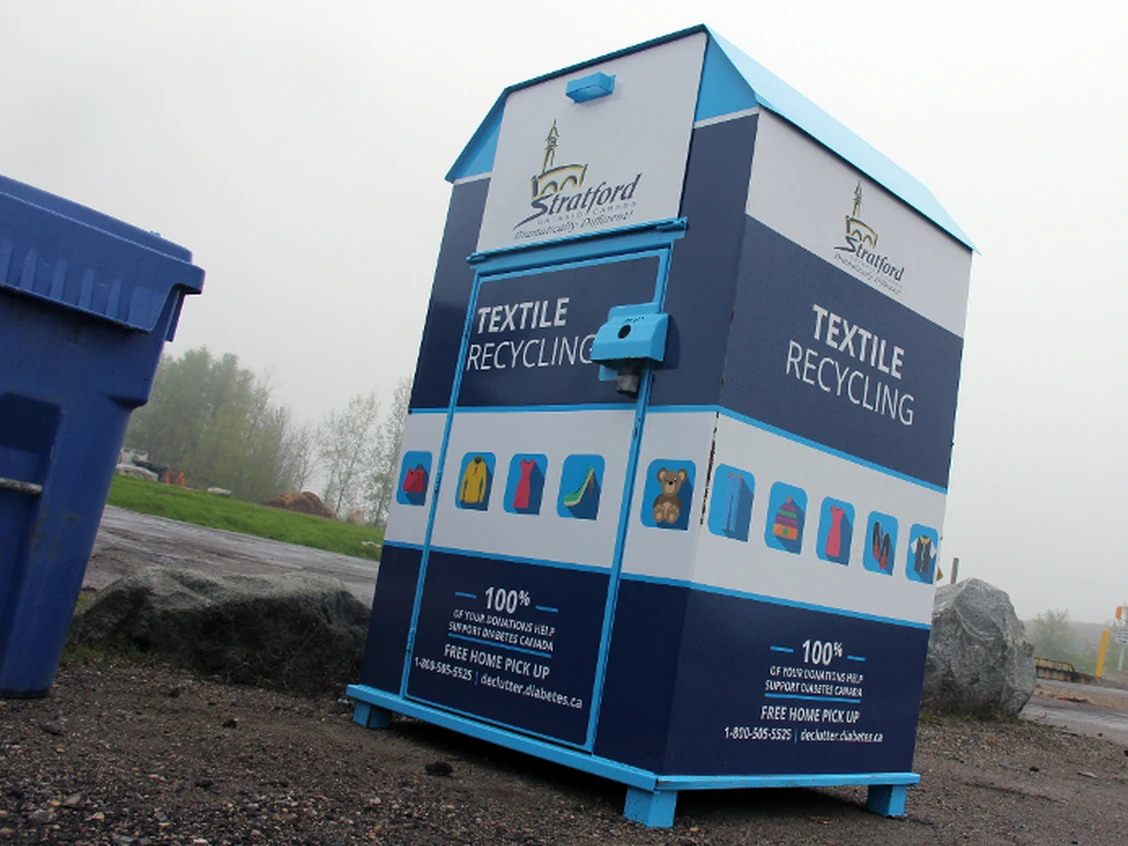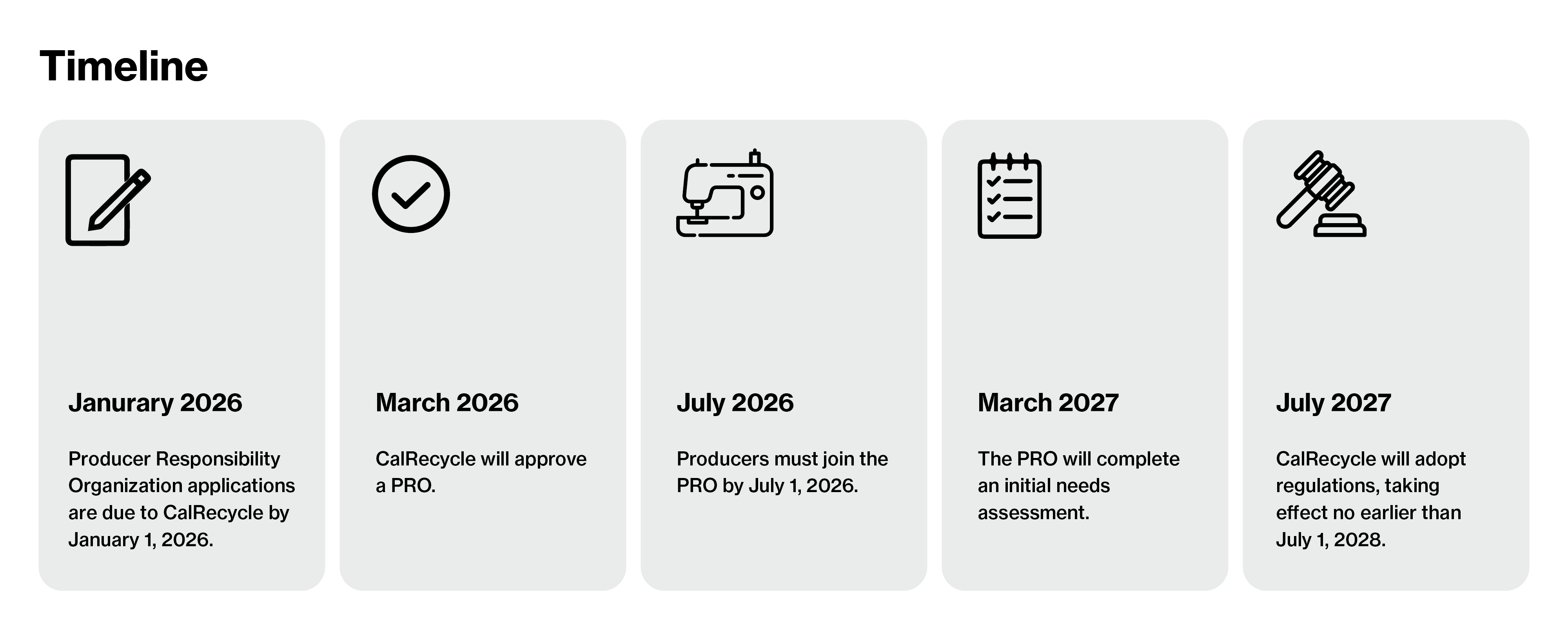The climate crisis is not fashionable, and our legislators are starting to see this, too!
With the increase in fast fashion production over the last decade, the quality of apparel has deteriorated, and garments, along with other textile products, are filling our landfills at an alarming rate.
Textile production has doubled between the years 2000 and 2015. Yet, federal legislation and national infrastructure (waste management programs, guidelines, technologies, and education for the public and textile producers) have not developed at the same pace.
Legislatures worldwide are taking action to mitigate textile waste and hold corporations and producers accountable for their environmental impact.
But, how can policy create long-lasting and effective change in the textile sector? And how can a circular approach transform the way textiles are manufactured, consumed, and disposed of?

The Problem
Globally, around 92 million tons of textiles end up in landfills each year, and this number is expected to climb to 134 million tons by the year 2030.
Textiles are difficult to recycle due to a lack of established recycling programs and effective technology. Blended material textiles pose more challenges to textile recycling due to the lack of sophisticated fiber separation technologies. Less than 1% of the fiber used to create textiles is recycled into new clothing or products. The remaining 99% is downcycled into items such as insulation or mattress filler, which ultimately end up in landfills.
Fortunately, there is hope with companies like Circ, headquartered in the United States (US). Their hydrothermal processing technology can transform discarded blended-material fibers into like-new and reusable fibers for textiles. With plans for its first commercial-scale textile-to-textile facility in France, Circ is paving the way for a more sustainable future.

Resale and reuse economies are emerging to confront the textile waste problem, but they cannot provide the sole solution. Less than half of all “used” clothes end up in the resale or secondhand economy, often due to garments being “too deteriorated” and not profitable. The US alone sends 30 billion pounds of textile waste to landfills and incinerators each year. Municipal waste facilities are filling up, even with a large portion of textile waste from the US exported to landfills in the Global South. Often, these places have less advanced municipal waste sorting facilities, contributing to increased pollution of the air and waterways, affecting the world’s most vulnerable communities.
It’s also estimated that about 20% of global water pollution is caused by dyeing and finishing textile products. Throughout the life cycle of a garment, microplastics and PFAS (Per- and Polyfluoroalkyl Substances) release from fast fashion garments into waterways. With a single laundry load of polyester clothing discharging approximately 700,000 microplastic fibers, the severe health risks attributed to exposure to PFAS and consumption of microplastics are becoming a harsh public health reality.
With global public health and the environment at risk, the textile industry's practices require the attention of legislatures worldwide.
Legislation
Legislation is being passed globally on the local, state, and national levels to address the issue of textile waste and pollution. Extended Producer Responsibility (EPR) is the most common form of legislation, which places the responsibility of “the collection, sorting, and recirculation of their products” onto the producer after they are discarded.
In 2008, the European Union (EU) adopted the Waste Framework Directive (WFD) as part of the larger European Green New Deal. The WFD introduced EPR requirements for waste management programs and established a “waste hierarchy.” An amendment to the WFD was introduced in 2023 to include specific stipulations regarding textile waste collection and the establishment of local and national programs as a part of the EU’s Strategy for Sustainable and Circular Textiles (2022). The goal of the strategy is to ensure that all textile products on the EU market are durable, repairable, recyclable, free of hazardous substances, and produced sustainably by 2030.
In 2009, Canada published an Action Plan on Extended EPR, which prompted several regions to establish regional textile waste programs, including local textile collection containers. All levels of government throughout Canada share responsibility for waste management and reduction programs; however, the federal and provincial governments have taken limited action to target prevention or diversion to address pollution from the textile sector. This highlights a crucial issue with environmental regulations broadly and EPR policy specifically, where localities are moving faster than the federal government in implementing sustainable systems.

In California, the recent passage of SB-707, the Responsible Textile Recovery Act (2024), is the first-ever textile-specific EPR bill passed in the US. SB-707 requires sellers and producers of apparel and textiles (with global revenues exceeding $1 million) in California to join a Producer Responsibility Organization (PRO), which must develop and implement a plan for the collection, recycling, and management of their products. With enforcement set to begin in 2030, this legislation provides a deadline for some of the fashion industry's biggest brands (Gap Inc., Zara, H&M) to take their impact on the climate crisis seriously.

The America’s Act (s. 3878) is proposed federal bipartisan legislation in the US that aims to expand free trade within the Western Hemisphere, stimulate greener economies, and enhance near-shoring initiatives. The bill includes $14 billion of grants and loans, as well as tax credits for circular textile businesses, along with investments in innovation and public education. This first-of-its-kind bill would provide meaningful incentives for textile reuse and recycling and set an important precedent that national textile EPR is possible.
Local and state governments have taken the initiative to create their own systems to address the textile waste crisis; however, these are often not scalable on a national or international level. Countries such as France, the Netherlands, and Hungary have implemented legislation to mitigate textile waste, but face their own set of challenges.
Barriers to Success
This legislation is some of the first in history that aims to regulate waste and EPR in the textile sector. However, there are still substantial barriers to holding the biggest fashion polluters accountable.
One of the biggest barriers to success in textile and sustainability policy is the lack of existing infrastructure (technological, logistical, and educational) to support textile recycling programs that proposed legislation, like California’s SB-707, necessitates. Textile waste capture, sorting, and recycling systems are not widely implemented or standardized on a large scale anywhere in the world. Suppose the federal government does not take the initiative to invest in creating a foundation for physical infrastructure. In that case, the burden will fall on local municipalities, which are already struggling with the waste of fast fashion (literally).
Along with the lack of physical waste management infrastructure, the absence of educational infrastructure poses a threat to the most successful EPR policies. With many legislatures lacking sufficient knowledge of textile production and post-consumption practices, education is necessary for all stakeholders. Educational programs on textile waste management should be readily available and accessible to brands, legislators, and the general public.
Standard textile sector supply chains often span the globe throughout the manufacturing process, creating a unique challenge due to regulatory policies being implemented at local or state levels, rather than at the federal level. Without clear federal policies, suppliers and brands are left to navigate a tangled web of overlapping state-level regulations and fragmented standards. Instead of a unified approach, we end up with a patchwork system that slows progress.
By contrast, implementing consistent policies across geographies offers a clearer path forward for scaling sustainable practices across the industry. Similarly, standardizing emissions reporting would be invaluable in order to have significant data to measure successes and failures.
With some EU nations falling behind on 2025 benchmarks that require mandatory textile collection bins and the EU Parliament voting to delay reporting requirements, it is clear that the current approach is not working. Benchmarks and long-term sustainability goals are helpful, but only when they are achievable. Enforcing these regulations is a grueling feat, necessitating a different approach to corporate accountability.
The prevailing method of accountability within textile policy defaults to imposing fees and other monetary penalties. This method is vital in contributing to special funds that support waste management programs; however, when utilized as the sole method to create change, its success is limited.
Corporations should be held accountable; however, when there are no existing frameworks, federal support, or infrastructure in place to meet these environmental standards, it is no surprise that they fail. The financial burden of regulatory policy is often disproportionately felt by manufacturers to adapt to environmental regulations, imploring cooperation and support across supply chains.
Incentives & Innovation
Incentives for circular practices and investment in innovative technologies could be the missing piece to meeting the goals of EPR policies.
Incentives and innovation are crucial factors in getting buy-in from big companies and making innovation accessible to small businesses. Incentives for Textile EPR include prioritizing the use of recycled materials over raw materials, promoting sustainable design, and implementing programs for repair and reuse. The Ellen MacArthur Foundation states, “Setting and incentivizing strong circular economy targets, based on the polluter pays principle, can disincentivize today’s linear approach to managing textiles.”
Companies should view circular approaches as an opportunity to re-imagine the status quo for a better business. According to the Textile Exchange, “Circular business models focus on retaining the value of existing materials through perpetual cycles. They minimize waste and pollution, keep products and materials in use, and regenerate natural systems.” In practice, this can take many forms, including but not limited to: take-back programs, utilizing sustainable materials that maintain structural integrity, and reselling and reusing products.
Without financial support, these policies have the potential to perpetuate greenwashing, where companies appear to meet regulatory standards without actually changing their practices. Government grants, special funds, or even private investments could enable businesses to devote more time, money, and labor to innovation in pursuit of a circular approach.
Patagonia is a great example of a company already implementing circular practices into its business model. They have a successful product repair program where customers can take or send back any Patagonia product and–almost always–have it repaired for free. Patagonia also offers the WornWear program, which allows customers to trade in used products for store credit, as well as shop for fully functional, pre-owned products.
unspun’s 3D-weaving technology is another beacon of innovation in the textile industry, emphasizing sustainable practices. The VEGA 3D weaving machines eliminate excess textile waste during the manufacturing process and can be deployed to manufacturers worldwide. unspun has a specific focus on localizing production for manufacturers, creating an opportunity to grow local economies, lower the carbon footprints, and reduce reliance on constantly changing global policies and logistics.
Innovation cannot simply be a buzzword; it must be a tangible effort to tackle the unprecedented consequences of fast fashion and the climate crisis.
Outside of the Legislature
All stakeholders in the textile industry, along with our legislators, are equally responsible for incorporating sustainable innovation into their practices and being active advocates for change. Multi-stakeholder Initiatives (MSI) are crucial to building bridges throughout the textile supply chain and harnessing voices into tangible action.
American Circular Textiles (AMCIRC) is a coalition of brands, manufacturers, and legislators that builds bridges to push for circular textile systems through domestic policy and create long-term change by helping companies adopt a circular business model. During SF Climate Week, AMCIRC co-hosted the second annual “unspun Summit” featuring a panel titled “How Trade Policy Could Make or Break Circular Fashion,” which stimulated a dialogue from across the textile, fashion, & manufacturing industries.
AMCIRC recently published its “National Blueprint for Effective EPR,” which outlines essential considerations for creating a lasting textile EPR policy in the US. This document is a must-read for anyone in the textile, fashion, and sustainability industries.
On the international level, Global Fashion Agenda (GFA) is a nonprofit organization based in Copenhagen working to create sustainable change by bringing together stakeholders across the textile sector through policy publications, research, events, and dialogue. GFA has a Policy Matrix for the Americas and the European Union, which details the updated legislative initiatives within the textile and fashion industry.
Earlier this year, unspun attended GFA’s Global Fashion Summit in Copenhagen, Denmark, with the theme “Barriers and Bridges.” This summit brought together stakeholders from across the textile sector to engage in important conversations driving the sustainable future of the textile industry.

So What?
Governments worldwide have the potential to significantly impact the future of the textile sector and combat the climate crisis through effective public policy.
Legislatures need to approach textile policy in a way that invests in and funds circular business models and innovative technological solutions. Simultaneously, federal governments must build systems, standards, and infrastructure that are scalable to support the implementation of EPR policy and other textile sector regulations.
Although there are many challenges ahead, governments have a unique opportunity, albeit under pressure from the impending climate crisis, to create new jobs within the green economy.
Without an active and vocal constituency, legislatures are ineffective, and in the textile sector, these “constituents” are large brands and multinational corporations with intricate supply chains. MSIs, such as GFA and AMCIRC, are essential for bridging the gap between producers, manufacturers, brands, and legislators. It is increasingly important that brands utilize their influential voices to embody their sustainable values in practice and advocate for change within the industry.
unspun has always had the aspiration to create solutions that shift the norm and, ultimately, change the way fashion impacts climate. We urge more textile manufacturers, innovators, and legislators to take the initiative to push for change in their respective spaces and collaborate to change the textile industry into a leading example of innovation for sustainability.
Our collective future is not just in our hands, but in the clothes, shoes, and garments we wear each day.
.svg)